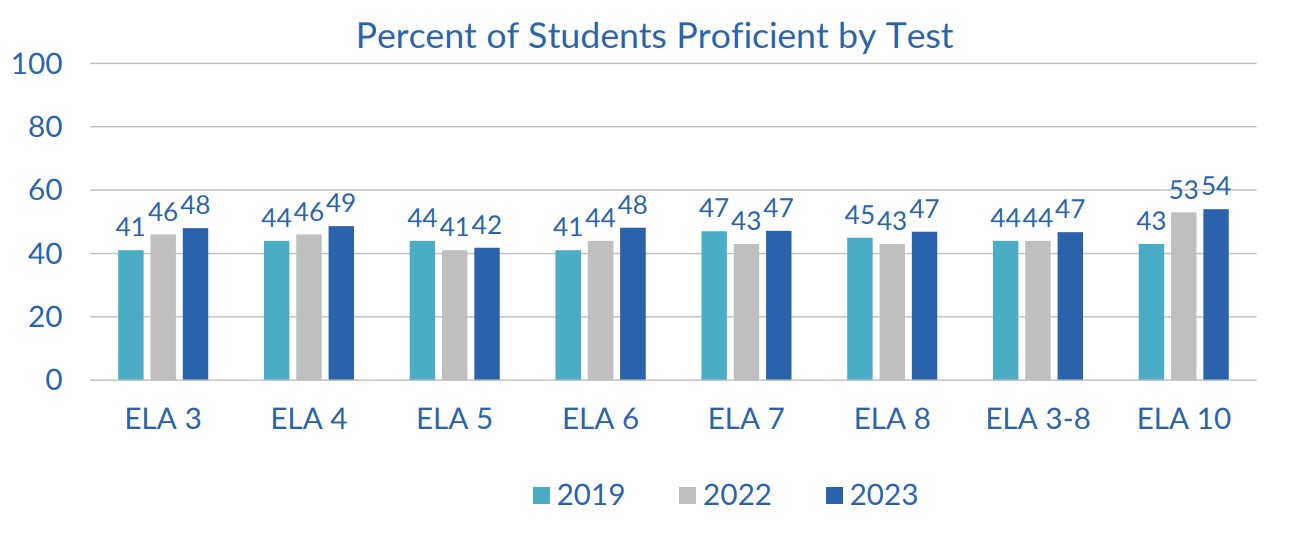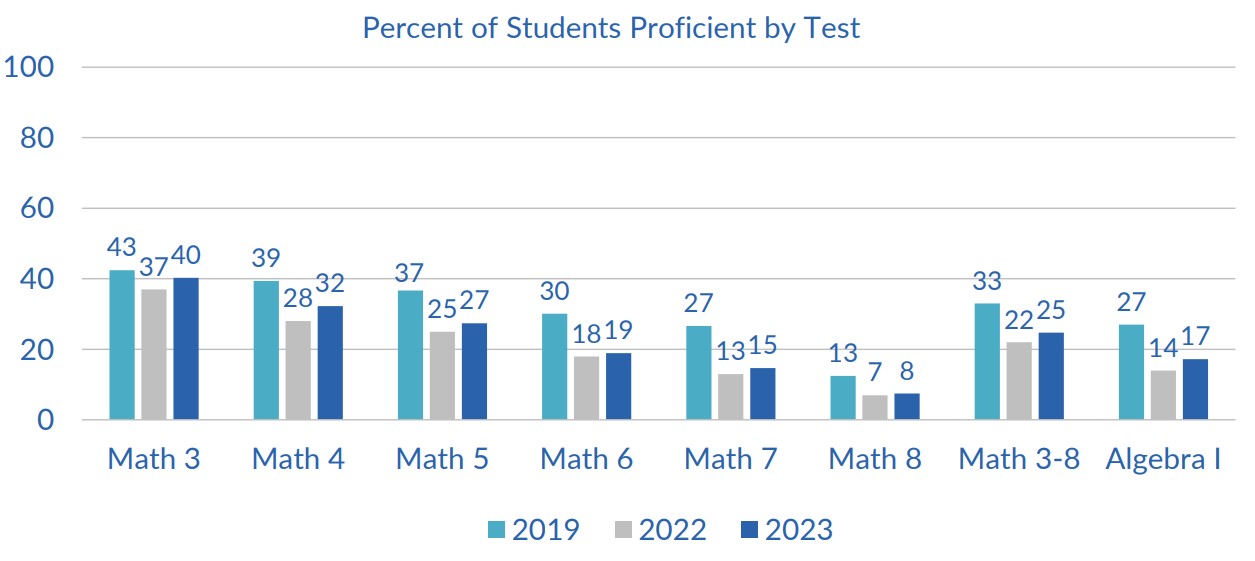Maryland’s latest standardized testing results show major improvements in English and slight increases in math proficiency within the state’s public schools, but there remain achievement gaps between white students and those of Black and Latino descent.
The state Department of Education released test results Tuesday from the Maryland Comprehensive Assessment Program (MCAP), which students took during the 2022-23 school year.
The data are from tests taken by students in grades three through eight in math, English language arts and science. Schools administered the science tests from March 6 to March 24 and math and language arts tests from April 3 to May 26.
Student test scores improved in English language arts and math compared to scores on tests students took in spring 2022, which was the first full statewide assessment since students returned to in-person instruction after many spent much time in virtual schooling due to the COVID-19 pandemic.
The math results don’t exceed test scores from the 2018-19 school year, or pre-pandemic. A shortened version of the test was administered two years ago to assess how students fared during online instruction.
The MCAP is among factors that determine the state’s annual report card and school star rating system. New reports were last issued in March, the first time the state issued the annual report card since 2019 because of the pandemic.
While high-level analyses were shared with the State Board of Education on Tuesday, school-level results will be released on the Maryland Report Card site in late September.
Besides assessing MCAP results from math and language arts, state officials also broke down data on students in fifth and eighth grade who took science tests and on students in 10th grade English and students enrolled in Algebra 1, Algebra 2 and Geometry.
State Boardmember Joan Mele-McCarthy said she had hoped that more students who are English learners and students with disabilities would score proficient in English language arts.
Almost 12% of students with disabilities scored as proficient in English language arts, versus 11% last year. But there was a slight decline in English learners who scored proficient, down from 13% last year to about 12%.
“All this money we are pumping into general [education]…We need to be thinking about these groups of learners and look at the kids who are economically disadvantaged,” Mele-McCarthy said. “I look at these stats all the time and I am not celebrating. I am not admonishing anyone. I’m just being passionate here.”
Superintendent Mohammed Choudhury said planned funding from the state’s Blueprint from Maryland’s Future should help all students. Also, the percentage of students with disabilities and English learners who scored proficient was higher than in the 2018-19 school year when 8% of each group scored proficient in language arts.
“I would not say that there has not been any progress. I would challenge that premise. We have made a lot of gains,” he said. “At the end of the day, we need to up our game.”
Here’s a summary of data comparisons from some test results this year and MCAP data the state released last year.
English language arts
Overall, nearly 47% of all students in third to eighth grades scored on a proficient level in 2023, an improvement over 2022 when about 44% scored proficient.

A graph from Maryland State Department of Education showing percentage of students proficient in English language arts. Screenshot.
In terms of race, 34% of Black students scored proficient versus 31% last year. Among students the state designated as Latino/Hispanic 31% scored proficient compared with 29% last school year.
The achievement gaps for Black and Latino students are still significant, compared with 63% of white and nearly 75% of Asian students scoring proficient. Last year, about 59% of white students and 73% of Asian students scored proficient.
Among third to eighth grade students from the state’s 24 school systems who took the test this year, Worcester County schools recorded the highest percentage, at 68%, who were proficient in English language arts. For Worcester, that was a 4 percentage point increase from last year.
Although Baltimore schools recorded a nearly 5 percentage point increase from last year, the city still recorded the lowest percentage in the state at 25%.
One of the biggest increases came in the number of students statewide who took and were tested on the high school course labeled “English 10.” This year, about 73,422 students took the test and 53.5% scored proficient. That is about the same percentage who scored proficient last year when 68,823 students took the test.
“What we’re doing in literacy is working. We just need to master it,” Choudhury said.
Math
In math, nearly 25% of third-to-eighth-grade students scored proficient in 2023. It represents an almost 3 percentage point increase from test scores in the spring 2022.

A graph from Maryland State Department of Education showing percentage of students proficient in math. Screenshot.
In terms of race, 12% of Black and Latino students recorded a proficient level in math, about two percentage points higher than last year.
About 40% of white students were proficient in math, nearly three percentage points higher than last year. Math proficiency also increased three percentage points among Asian students rising from 53% to 56%.
Baltimore recorded, at 9%, the lowest percentage of students in grades three through eight who were proficient in math, but it was an improvement for the city of two percentage points from last year.
Worcester County students recorded the highest percentage of students who scored proficient, at 47%, a 10 percentage increase from last year.
Of about 74,400 students who took Algebra 1 and were tested this year, 17% scored proficient. Last year, of 76,608 students, 14% scored proficient.
Board Vice President Joshua Michael, a former math teacher, praised the slight improvements in math. However, he called the results “sobering.”
Although math proficiency percentages remain below pre-pandemic levels, Choudhury said there remains hope.
“Is it working in each individual school? No. It is in the aggregate,” he said. “This is not mission accomplished. We have work to do.”
By William J. Ford


Write a Letter to the Editor on this Article
We encourage readers to offer their point of view on this article by submitting the following form. Editing is sometimes necessary and is done at the discretion of the editorial staff.